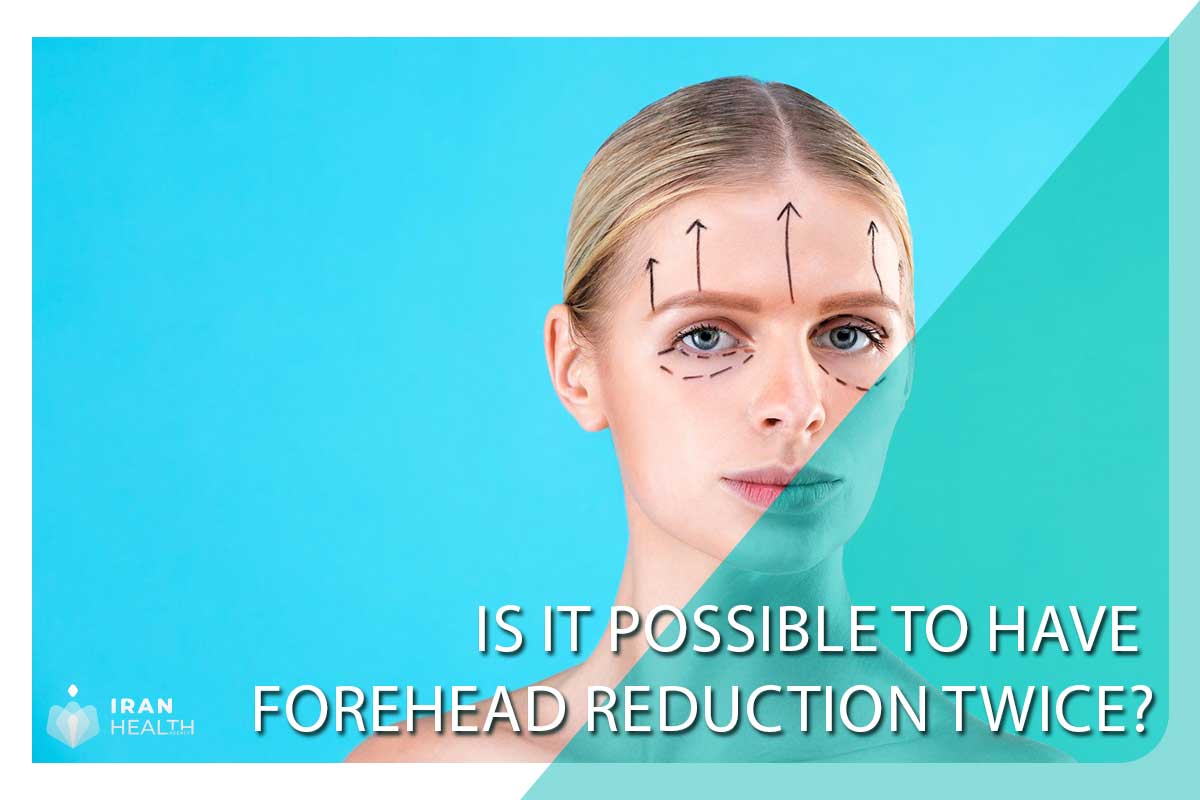Are there alternative options to forehead reduction in iran?
1.Eyebrow lift
If your forehead looks longer due to the lowness of your eyebrows, an alternative to forehead reduction surgery may be a brow lift.
This procedure involves manipulating the muscles or moving the eyebrow skin to lift the eyebrows on the face. In some cases, facelift brows can make the forehead look shorter.
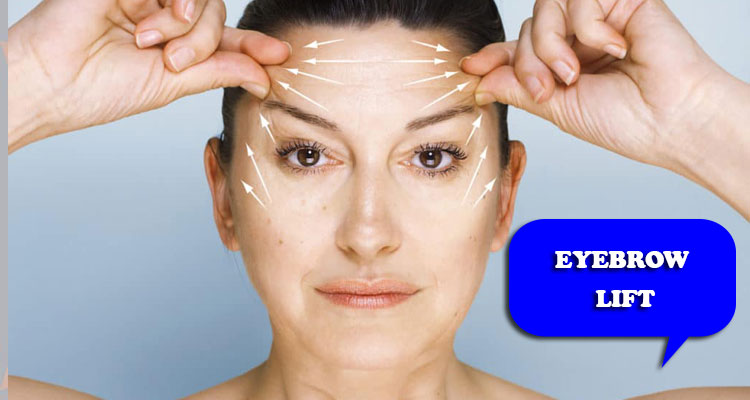
2.Hair Transplant
If your forehead looks longer due to the high hairline, another alternative may be a hair grafting or hair transplant in Iran.
This procedure involves removing hair from the back of the head and transplanting the follicles along the front of the hairline. This procedure can also help reduce the forehead.
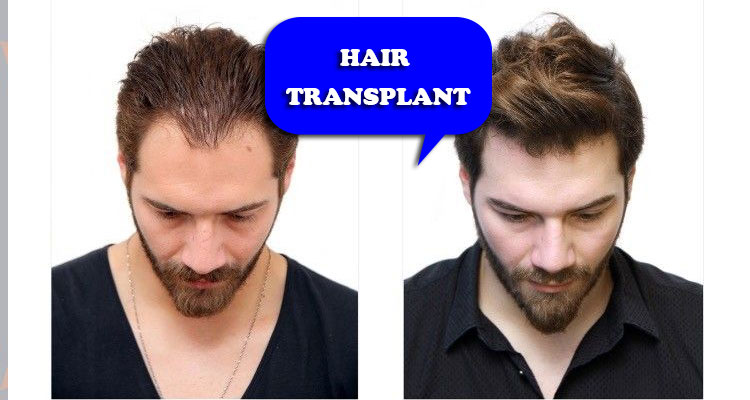
What happens after forehead reduction in Iran?
One of the most common side effects of forehead reduction surgery is temporary numbness immediately after surgery.
1.Postoperative numbness
If it persists, you should contact our surgeon for further assistance. This feeling usually lasts for three to five days after your operation
2.Scar
Scarring is expected after surgery, but your surgeon works diligently to make sure the scar is not as obvious as possible. As your forehead continues to heal, the scar will be less noticeable.
Once the treatment area is completely healed, you should not have a scar, otherwise it will be very light in appearance.
3.Swelling of the forehead
After forehead reduction surgery, the patient should be ready for some degree of swelling. Your doctor will give you instructions on how to reduce this inflammation. In many cases, the patient can use a cold compress to reduce the risk of swelling.
4.Bleeding
Patients may experience some bleeding at the surgical area after surgery. Persistent bleeding can occur if the forehead is not treated properly. To decrease the risk of this complication, patients should avoid from taking certain medications, smoking, or drinking alcohol instantly before or after forehead reduction surgery.
5.Hair loss
Some people may have temporary hair loss at the incision area made in the hairline. Hair loss can be different from patient to patient. Fine hair loss is common during recovery. Normally, you can expect hair to grow within three months of surgery.
6.Long recovery time
While most patients can expect to fully recover within three weeks of surgery, some patients may take longer. For proper recovery, people should follow their doctor’s instructions. This includes avoiding strenuous activity for a while, avoiding certain medications, and abstaining from alcohol.
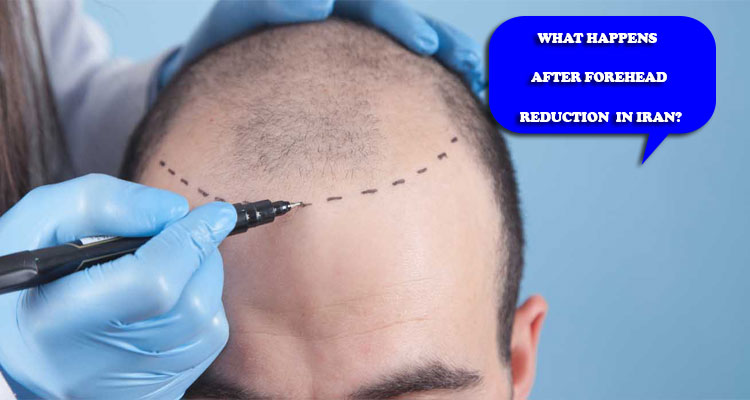
What is a one-stage versus two-stage or multi-stage forehead reduction in Iran?
Depending on the desired amount of lowering and the degree of scalp laxity, hairline lowering can be done in a one-stage or multi-stage surgery.
Forehead reduction can be done in conjunction with other surgical procedures, facelift in Iran. A brow lift combined with hairline lowering surgery in a one-stage procedure can significantly improve and shorten the appearance of the forehead.
In a one-stage forehead reduction surgery, a carefully camouflaged incision is made along the hairline and used to advance the hair bearing scalp and shorten the forehead in one surgery.
This technique can lead to the hairline advancement normally in the range of 1.5-2.5 cm and sometimes more. This is the most common method patients choose because it is faster and requires only one procedure.
Most female patients with hairlines starting in the range of 7-9 cm are satisfied with approximately 2 cm of hairline advancement.
Patients whose initial hairline is higher than about 9 cm from the eyebrows may be dissatisfied with lowering the hairline by only 2-2.5 cm, as they may feel that the forehead is still too large. These patients may need a multi-stage procedure or may not be a good candidate for hairline lowering in general.
There are a variety of multi-step methods. In some cases, a similar incision is made in the first stage and a tissue expander is placed under the hairy parts of the scalp.
Within 6-8 weeks, the tissue expander is slowly filled and the scalp is stretched. In the second stage of this procedure, the tissue expander is removed and the hairline is advanced and lowered to a greater extent than the one-stage forehead reduction surgery.
Some patients may also choose hair transplantation as a planned second stage procedure to help camouflage the scar or customize the shape of the hairline, but this method should not be relied upon to further lower the hairline, but only for thickening hairline or scar camouflage.
Other patients may be candidates for a second forehead reduction surgery after the scalp has more opportunity to stretch, but this is a rare condition and, even after a long period of recovery between surgeries will not reliably lower the hairline much more than 1 additional cm even after extended time for healing between surgeries. It depends on the patient’s hairline, their goals and anatomy.

Is forehead reduction in Iran safe for all skin colors, races and ethnicities?
Yes, but patients with darker skin may not always be good candidates for the reasons described below.
Forehead reduction surgery usually can be performed on patients of all skin color and ethnicity, including Caucasian, African-American, Asian, Hispanic, and multiracial patients. Keep in mind that patients with darker skin tones will have more difficulty hiding scars.
Scars in these patients eventually improve to a lighter color than the surrounding skin, and patients who are prone to poor wound healing may not be good candidates for forehead reduction surgery.
Patients with fair skin and thick hairline see the best results along the front hairline. African-American patients usually need to have thick hair along the front hairline and their foreheads should not be higher than 9 cm above the eyebrows to be a good candidate for forehead reduction.
Patients with thin hair, high hairline, and darker skin tones are the worst candidates for forehead reduction surgery (and may not be candidates at all) because skin color and lack of hair density do not hide the scar.
In addition, when the hairline is very high, these patients may need tissue expansion to achieve proper forehead reduction / hairline advancement.

How much can I low my hairline? What is the size of a “normal” forehead?
In most cases, hairline can be lowered 2.0 to 2.5 cm in one session. Keep in mind that human tissues are stretched under tension, so removing 2.5 cm of forehead skin may reduce the hairline by approximately 2.25 cm or more.
This is different for each patient. It is also important to recognize that measurements are subjective. When placing a ruler against the forehead to measure forehead size, the position of this ruler can be adjusted slightly in different directions to drastically change the measurement results.
Finally, sparse hair (“baby hair”) along the front hairline is often not used to hide scars, so incisions should be made above the hairline during surgery to hide mature, healthy hair. This may cause the surgical results to appear in the postoperative measurement slightly less than the amount of skin removed during surgery.
All of these are normal and part of any forehead reduction surgery. Patients should not focus on numbers for all of these reasons, but should instead focus on improvement, which is almost always significant.
Patients who are focused on specific forehead measurements and who would be disappointed with anything less than a specific measurement are not good candidates for surgery.
There is no “normal” forehead height. Forehead height is generally measured from the eyebrows to where the thick or dense part of the hairline begins (not the fine “baby” hair).
The goal after surgery for many patients is to be in the range of 5.5 to 6.5 cm, but this can be different. Many women with hair lines above this range look very beautiful. Hair lines less than 5.5 cm from the eyebrows run the risk of looking very unnatural, strange and aesthetically unattractive.
What is the difference between hairline lowering surgery and hair transplantation?
With hairline lowering surgery, an incision is made in the hairline, the scalp is raised, the hairline is advanced, excess skin is removed, and the incision is carefully closed.
Related article that you can read: Hairline lowering by hair transplant in Iran
In hair transplantation, the hair is taken from somewhere else on the patient’s head (almost always from the back of the head inside the hair), divided into tiny follicles, and then one hair follicle is transplanted to the forehead skin each time below the patient’s natural hairline.
In most cases, a second hair transplant surgery is needed to achieve sufficient density. The end result can be similar between the two techniques, but forehead reduction surgery changes much faster and usually has a better density than hair transplants, unless several hair transplants procedures are performed.
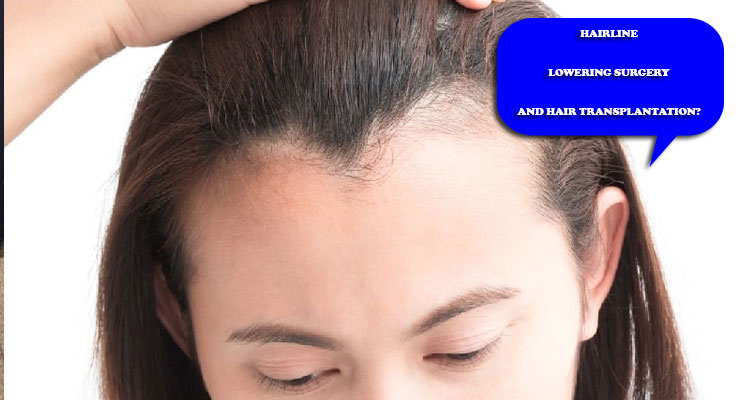
What can I expect after hairline surgery? What is the time of convalescence and recovery after hairline lowering surgery?
Patients can expect mild pain after surgery, which is usually temporary. A dressing is applied overnight and removed in the morning after surgery.
At that point, the nurses and surgeon check to make sure the patient is well. Patients review their simple wound care instructions and are allowed to travel home for about a week. Patients are advised to refrain from strenuous physical activity for two weeks. Mild bruising and swelling are possible, but usually minimal.
Patients are allowed to camouflage the incision with their hair, hat, or soft headband while healing as long as the items are clean. Patients return one week after surgery to remove the suture.
The incision fades over time, and hair grows through the incision to help hide the scar. This process takes several months to complete, but most patients can easily hide their incision and return to all normal activities within 2 weeks.
Can the patient have forehead reduction in Iran more than once?
In most cases, yes, a patient can have more than one forehead reduction surgery, but it depends on the patient and the laxity of the scalp.
The scalp is usually stretch over time, and if this let for another centimeter or forehead reduction if a second forehead reduction / hairline advancement surgery is performed at a later date. In most cases, patients accomplish enough advancement with one surgery.
it is possible to have forehead reduction twice. 3 to 4 months after the first surgery, you can have revision forehead reduction surgery, but during this time you should choose the most experienced doctor.
Because this is a very sensitive operation and requires experience. First of all, a very detailed study should be done by performing millimeter calculations with endoscopic and technological methods.
You need to take care of the sensitive tissues of your face at the base of the hair and possible hair loss. It is recommended that the patient undergo endoscopic revision forehead reduction surgery to correct the problems you have occurred after initial surgery.
A well-done forehead reduction can be performed with the help of a technological endoscopic procedure that provides the best results and the easiest recovery (not the classic method) by inserting through an incision made from the hairline. As the healing process completes, the scar will become almost invisible.
With this operation, which is performed with the latest endoscopic technology, you can achieve your desired appearance.
Endoscopic technology protects your soft tissues and provides you with maximum healing speed. Because this method offers a much more sensitive and accurate work opportunity than the classic methods, it minimizes the risk of hair volume reduction. This will allow you to have a very comfortable recovery period and return to your daily life immediately.
